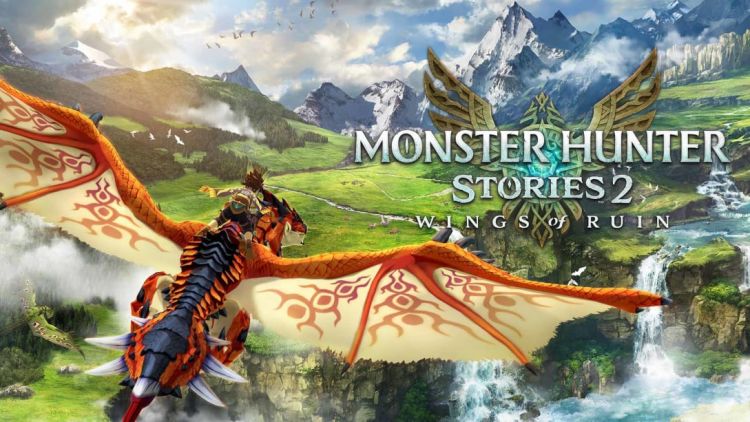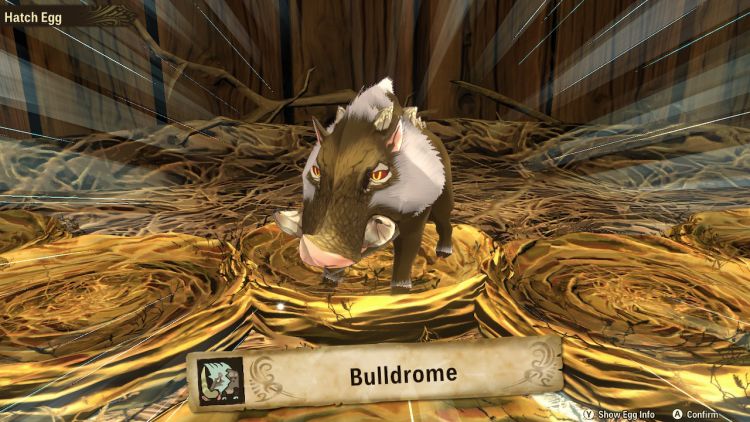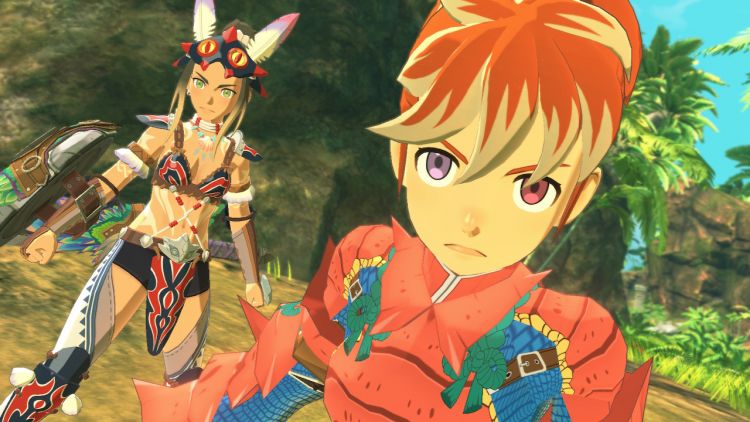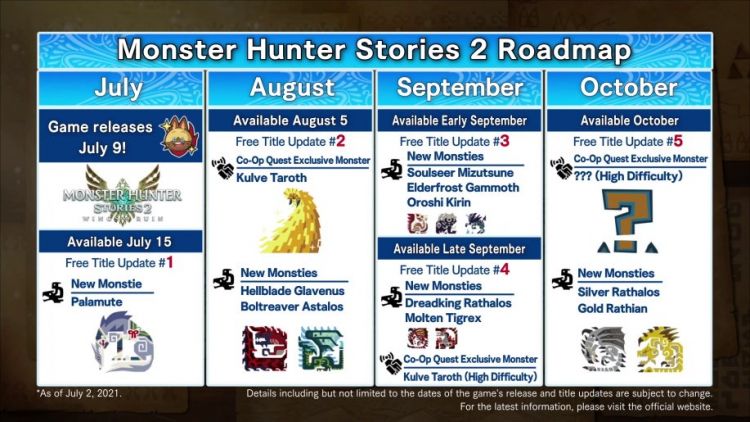Since the day I found a used copy of Monster Hunter on the PS2 a long, long time ago at an EB Games (now known as Gamestop), I’ve been a huge Monster Hunter fan. Back in 2017, I missed out on Capcom’s Monster Hunter spin-off, Monster Hunter Stories for the 3DS. It put a nifty little spin on the franchise by going full-on JRPG where players could tame monsters and featured a rock, paper, scissors turn-based combat system while still retaining the overall charm and spirit of its predecessors. Despite the game eventually landing on mobile platforms in 2018, I just never found the time to play it. Thankfully, however, Capcom has me covered with Monster Hunter Stories 2: Wings of Ruin.
Born in the small village of Mahana, you are the descendant of Red, the highly revered protector of Hakolo island where your home is located. The night before you begin your training as a Monster Rider begins, something mysterious happens as Rathalos take to the skies and the sea around Hakolo glows red as far as the eye can see. Despite this ominous sign, your training starts as you set out with your friend and mentor Kayna.
It doesn’t take long before strange events begin to take place across the island and monsters begin to act strangely. Eventually, the strange phenomenon occurring about the island sends your team up the Guardian Mountain to check on your grandfather’s monster, Guardian Ratha. Instead, though, you end up running into Ena who gives you the Rathalos’ egg and asks you to protect it. In order to do so, the Rider decides to go with Ena and leaves the island and that’s where the demo ends.
Customization and exploration
There’s a healthy chunk of content in the demo for Wings of Ruin and you’ll easily sink a few hours into it. Much like the mainline Monster Hunter titles, you begin by creating a character, using the game’s decent character creator that also affects what Red looks like. If you’re like me and enjoy accessorizing your character, Stories 2 also features a layered armor mechanic where players can equip special armor over their equipped gear without affecting their stats. There is a wide range of armor and weapons to craft in the demo as well and unlike the mainline titles, it is definitely easier to gather the necessary resources in order to forge gear. Crafted gear is based on the accumulation of points and the rarer the monster’s parts, the more points you get for turning them in.
The island of Hakolo was small, but not in a way that negatively impacted the exploration, and most importantly, it felt alive and populated with wildlife. I noticed many different creatures and critters roaming around that were peaceful or otherwise. Finding and collecting materials was easy and there were plenty of treasures tucked in places that kept me searching around while I did one of the many quests the demo provided for me. Monster dens appear randomly around for players looking to collect monster eggs in order to hatch cute lil baby monsties and rarer eggs hatch monsters with better genes and stats. The final version of the game will also feature some Deviant versions of the monsters as well with some more coming later in free DLC updates.
C-c-c-combat
As I stated previously, Wings of Ruin will be my first Stories game but I like the turn-based combat system that is in the demo. It relies on a rock, paper, scissors set up, where players have to anticipate what the monster is going to do, especially when being targeted by a monster. Two opposing characters who target each other during battle will enter into a head-to-head attack and being the winner in these moments can make a huge difference in terms of damage output and how easily you can survive an encounter. Winning will result in more damage done to a target and less damage received during the attack. Having researched Monster Hunter Stories, the previous games featured a more randomized AI making it more of a guessing game but that is no longer the case. In the sequel, monsters have a set pattern, making it easier to learn their attacks and ultimately, overcome.
Parts can be targeted in order to gain the upper hand during battle and prevent monsters from unleashing their more devastating abilities. In Wings of Ruin, players are allowed to equip up to three weapons which can be seamlessly swapped mid-battle. There are three types of weapons which are slashing, piercing, and blunt types. Monsters do have resistances to specific weapon types so changing them out is essential, especially if you want to target Anjanath’s nose and stop it from engulfing your whole party in flames. I found myself running with a greatsword, bow, and hammer setup. If you’re a fan of the hunting horn, sword and shield, or gun lance though, worry not because those are also available options.
Battles are pretty interactive as well and have a cinematic feel about them. As players fight, they can eventually ride their mounts to deliver stronger attacks and unleash devastating abilities. On some occasions, monsters might clash and you’ll have to repeatedly press a button for your monster to win. During one attack, I charged my monster my kinship gauge to its highest level (level 3) and used my monster’s skill. What followed was a goofy scene where my Yian Kut-Ku ate some Konchu and then fired off a huge blast of flames. I had to spin the right stick in order to do as much damage as I could. It’s a good way to keep players involved instead of just tapping a button and not paying any attention to the aftermath.
The Cons
The game struggles graphically on the Switch and the demo didn’t perform that well either. One issue that was immediately noticeable for me was the framerate while I had the system docked. As I ran around the village of Mahana, it more or less stuttered around my character as she moved through her tiny hometown. While I do like the graphical style of Stories, it’s full of low res textures accompanied by a ton of pop-in, which would also affect the framerate from time to time, depending on what the game was loading up. For example, during my trip up Guardian Mountain, red grass would pop-in to view and it would often cause the framerate to stutter. The camera also moves in an odd sluggish way. It starts off slowly, then speeds up the longer you’re moving it, and tweaking the camera speed doesn’t do away with this.
There were some other issues with the game I had like the fact that you can’t control your party members in battle. Thankfully they seem tolerable and did help when in a pinch. Armors are sold as a set and not by individual pieces, so you’re locked into some of the uglier sets with no option to mix and match your armor like you would in a mainline game. You can bring along a team of six monsters that each have their own unique abilities to help aid in exploration but swapping out monsters feels cumbersome. Toward the end of the demo, I used my Yian Kut-Ku who could smash rocks to uncover hidden treasures and could use fire abilities. When exploring dens though, I more than once had to swap out to my Velocidrome in order to jump across gaps and it got obnoxious after a while.
One thing I discovered in my research is that the sequel is loosely connected to the first game so you don’t have to play Stories to know what’s going on in the sequel. Much like Monster Hunter Rise, your progress in the demo carries over to the retail version, and both games will receive bonus content for having save files on your console.
Capcom also announced this morning that Wings of Ruin will be receiving up to five title updates that add new monsters and co-op content (see roadmap below). Despite its issues, which I hope are ironed out for the final release, I had a very good time with the few hours I spent playing the demo. I searched the island of Hakolo far and wide, dove into its monster dens, completed the village’s requests, and took on many ferocious beasts in the process. It goes without saying that I am looking forward to when Monster Hunter Stories 2: Wings of Ruin launches on July 9th.
DLC Roadmap






